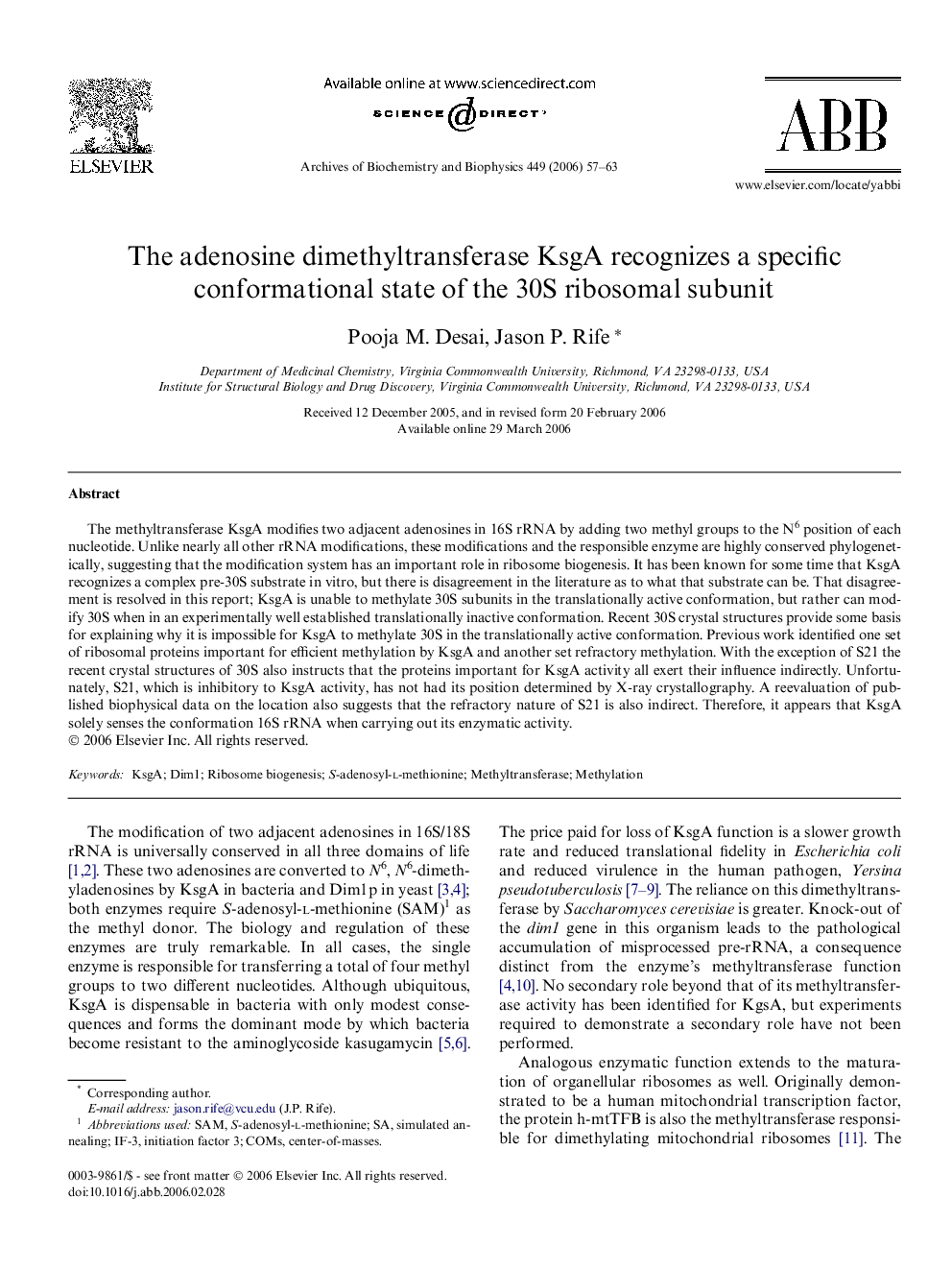| Article ID | Journal | Published Year | Pages | File Type |
|---|---|---|---|---|
| 1927533 | Archives of Biochemistry and Biophysics | 2006 | 7 Pages |
The methyltransferase KsgA modifies two adjacent adenosines in 16S rRNA by adding two methyl groups to the N6 position of each nucleotide. Unlike nearly all other rRNA modifications, these modifications and the responsible enzyme are highly conserved phylogenetically, suggesting that the modification system has an important role in ribosome biogenesis. It has been known for some time that KsgA recognizes a complex pre-30S substrate in vitro, but there is disagreement in the literature as to what that substrate can be. That disagreement is resolved in this report; KsgA is unable to methylate 30S subunits in the translationally active conformation, but rather can modify 30S when in an experimentally well established translationally inactive conformation. Recent 30S crystal structures provide some basis for explaining why it is impossible for KsgA to methylate 30S in the translationally active conformation. Previous work identified one set of ribosomal proteins important for efficient methylation by KsgA and another set refractory methylation. With the exception of S21 the recent crystal structures of 30S also instructs that the proteins important for KsgA activity all exert their influence indirectly. Unfortunately, S21, which is inhibitory to KsgA activity, has not had its position determined by X-ray crystallography. A reevaluation of published biophysical data on the location also suggests that the refractory nature of S21 is also indirect. Therefore, it appears that KsgA solely senses the conformation 16S rRNA when carrying out its enzymatic activity.
